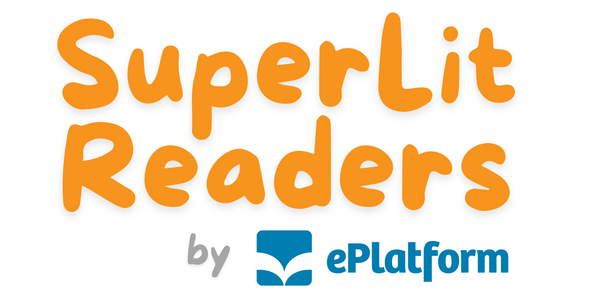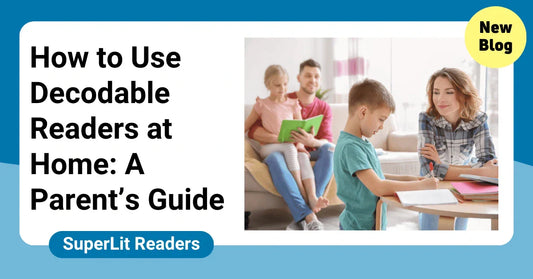How to Use Decodable Readers at Home: A Parent’s Guide

🕐 Estimated reading time: 8 minutes | Last updated: July 2025
Helping your child learn to read at home can feel confusing, especially when you’re handed a set of decodable readers and told to “do phonics practice.”
If you’re wondering what decodable readers actually do, how they fit into your child’s phonics lessons, and how to use them well at home without tears, you’re in the right place.
This guide breaks it all down step by step, so parents can support early reading confidently and make decodable readers part of daily life.
Table of Contents
- What Are Decodable Readers?
- Why Reading Practice at Home Matters
- How to Get Started with Decodable Readers at Home
- Tips for Making Decodable Reading Fun
- What If My Child Gets Frustrated?
- Combining Decodable Readers with Other Books
- Final Thoughts
What Are Decodable Readers?
Decodable readers in New Zealand are simple books written to match your child’s current phonics skills. Unlike regular storybooks, these special readers only use letter sounds and spelling patterns your child has already learned at school.
This makes them perfect for practising blending and decoding skills in a safe, successful way. When kids read decodable books, they practise sounding out words independently instead of guessing, which builds true reading confidence.
High-quality decodable readers align with systematic synthetic phonics programs. This means every book fits into a clear scope and sequence, helping kids build skills step by step.
Used at home alongside classroom phonics lessons, decodable readers help reinforce learning so your child masters letter sounds faster and grows into a fluent reader with less stress.
Why Reading Practice at Home Matters
Your child might get great phonics teaching at school, but reading confidence really grows when kids get daily practice outside the classroom too.
Reading decodable books at home lets kids revisit the letter-sound patterns they’re learning with their teacher, giving them extra chances to blend words and practise tricky sounds in context. Over time, this repeated practice makes decoding automatic, the first step to fluent reading.
Reading practice at home also:
- Strengthens the connection between home and school learning
- Helps parents see what sounds their child knows and which ones need extra practice
- Builds a habit of daily reading, which research shows is key for reading success
The best part? Daily phonics reading doesn’t need to take hours. Just 10–15 minutes with decodable readers each day adds up to real results.
How to Get Started with Decodable Readers at Home
Many parents feel nervous about “doing phonics” at home. But you don’t need to be a teacher to use decodable readers well. You just need a few simple routines.
Here’s how to start:
- Pick the right level: Use books that match your child’s current phonics scope and sequence. If the book has lots of sounds they haven’t learned yet, it will feel too hard and lead to frustration.
- Set small goals: One short reader, or even just a few pages a night, is enough. Celebrate finishing a book and keep it fun.
- Sit side by side: Let your child have a go at sounding out words first. Be patient and wait a few seconds before stepping in with help or reminders.
End each reading session on a positive note. A quick high five or sticker for trying builds motivation to read again tomorrow.
Tips for Making Decodable Reading Fun
If decodable books feel boring or too much like homework, kids won’t want to do them. It’s worth putting a bit of fun into your daily routine.
Try these tips to keep reading fresh and enjoyable:
- Celebrate every small success. Praise effort, not perfection.
- Use silly voices or actions to act out stories, even if they’re simple.
- Take turns: you read a page, then your child reads it back.
Many parents worry decodable readers are “too repetitive,” but that repetition is what builds mastery. When your child sees they can read the same tricky word in multiple books, their confidence soars. Keep it light, playful, and connected to what they love.
What If My Child Gets Frustrated?
Even the best decodable reader can feel tricky some days. If your child is getting stuck or upset, it’s usually a sign the book is a bit too hard or they’re just tired.
Here’s how to handle it calmly:
- Take a short break, have a snack, and come back later if needed.
- Try an easier book from an earlier phonics step to rebuild success.
- Remind your child that every reader makes mistakes. The important thing is to keep trying.
If frustration is happening often, check with your child’s teacher or phonics tutor. They can help you pick the right level of decodable readers that match your child’s systematic phonics program.
Combining Decodable Readers with Other Books
Decodable readers are powerful, but they shouldn’t be the only books your child sees at home. A balanced home reading routine includes plenty of fun books that build language and curiosity.
Alongside your decodable readers, make time for:
- Bedtime stories you read aloud, even advanced books kids can’t decode yet
- Non-fiction books about favourite animals, sports, or science facts
- Picture books with rich vocabulary and beautiful illustrations
When you combine phonics practice with wider reading, your child grows decoding skills and a love of stories, the ultimate goal for every young reader.
Final Thoughts
Decodable readers help your child practise exactly what they’re learning through systematic synthetic phonics at school, but they also give you, as a parent, an easy, stress-free way to support reading at home.
Keep it simple. Pick the right level, keep reading sessions short and positive, and mix decodable books with stories your child loves. The result? A more confident reader ready to move beyond decoding into fluent, joyful reading for life.
SuperLit Readers are designed to make this easy. Every set is aligned with proven phonics sequences, with fun characters, clear sound focus, and engaging stories that help your child master reading step by step.




